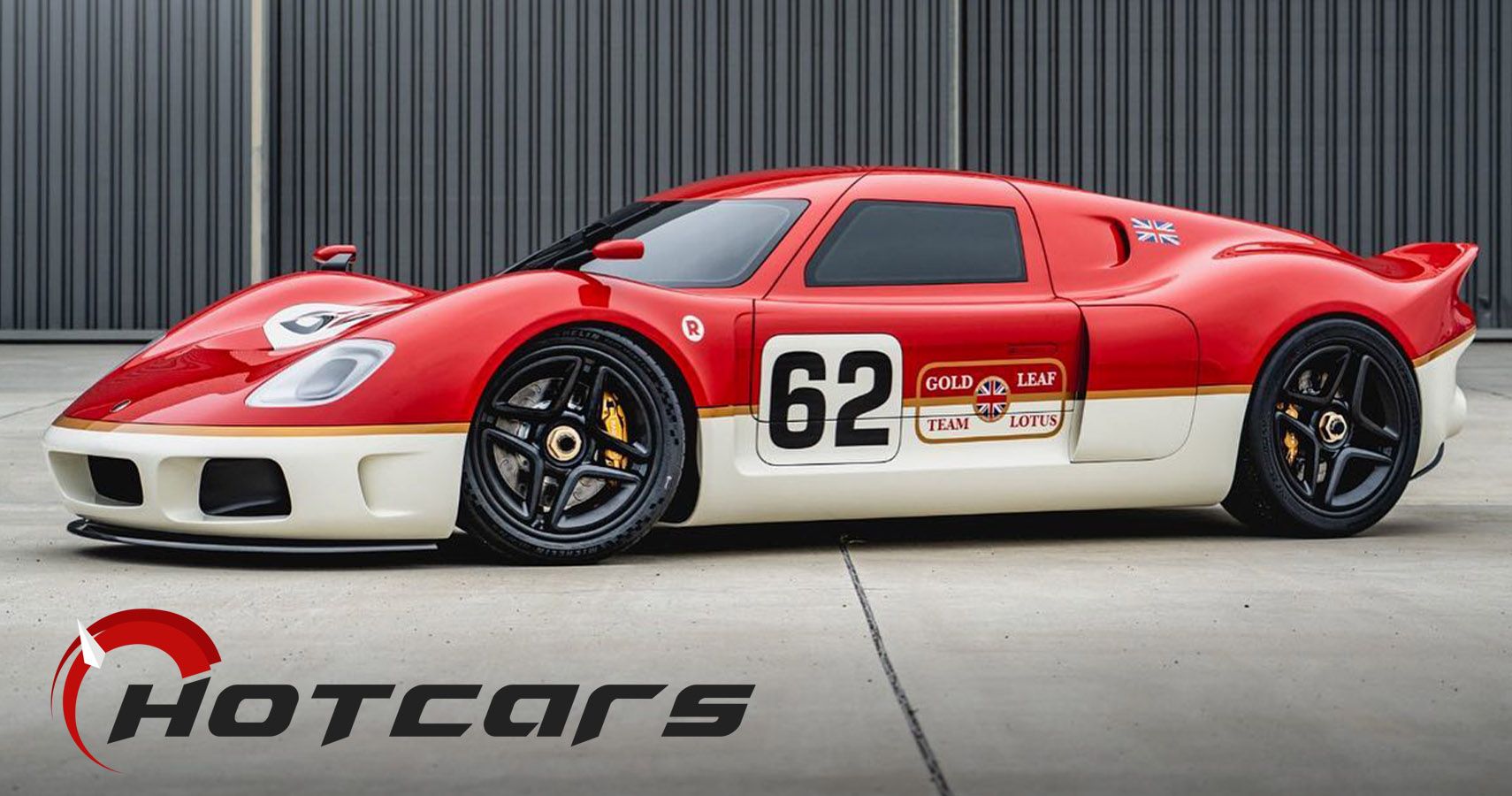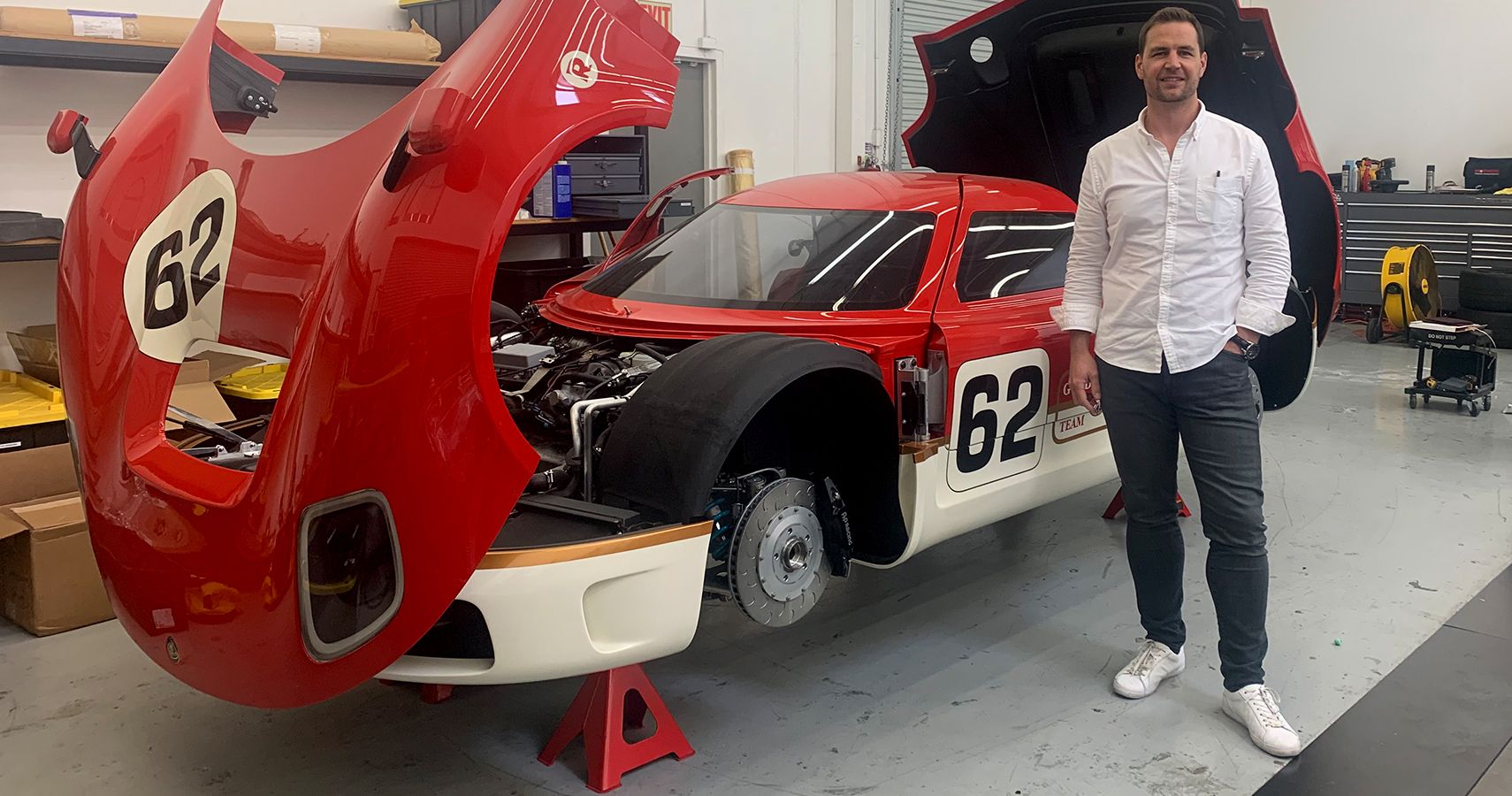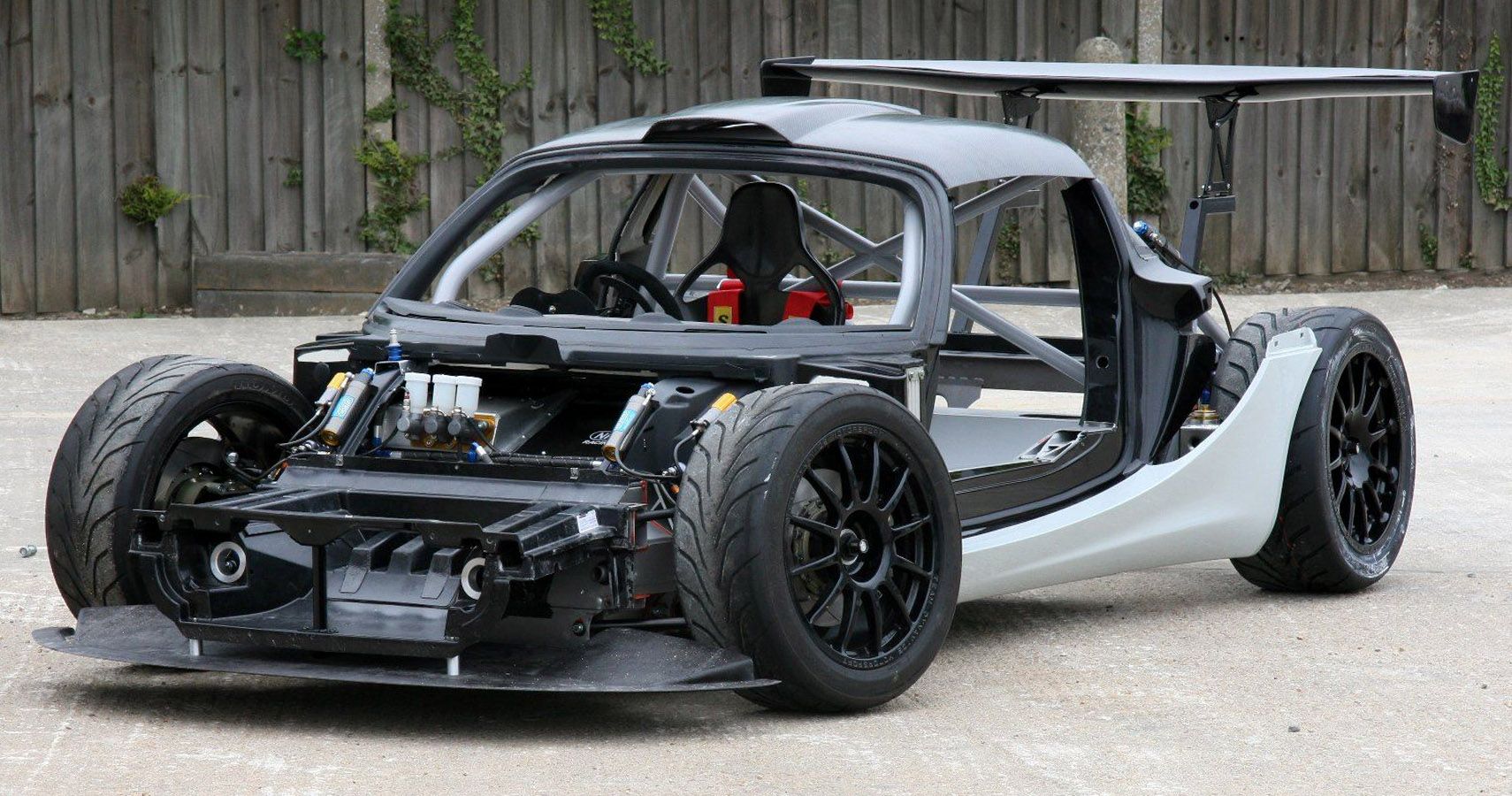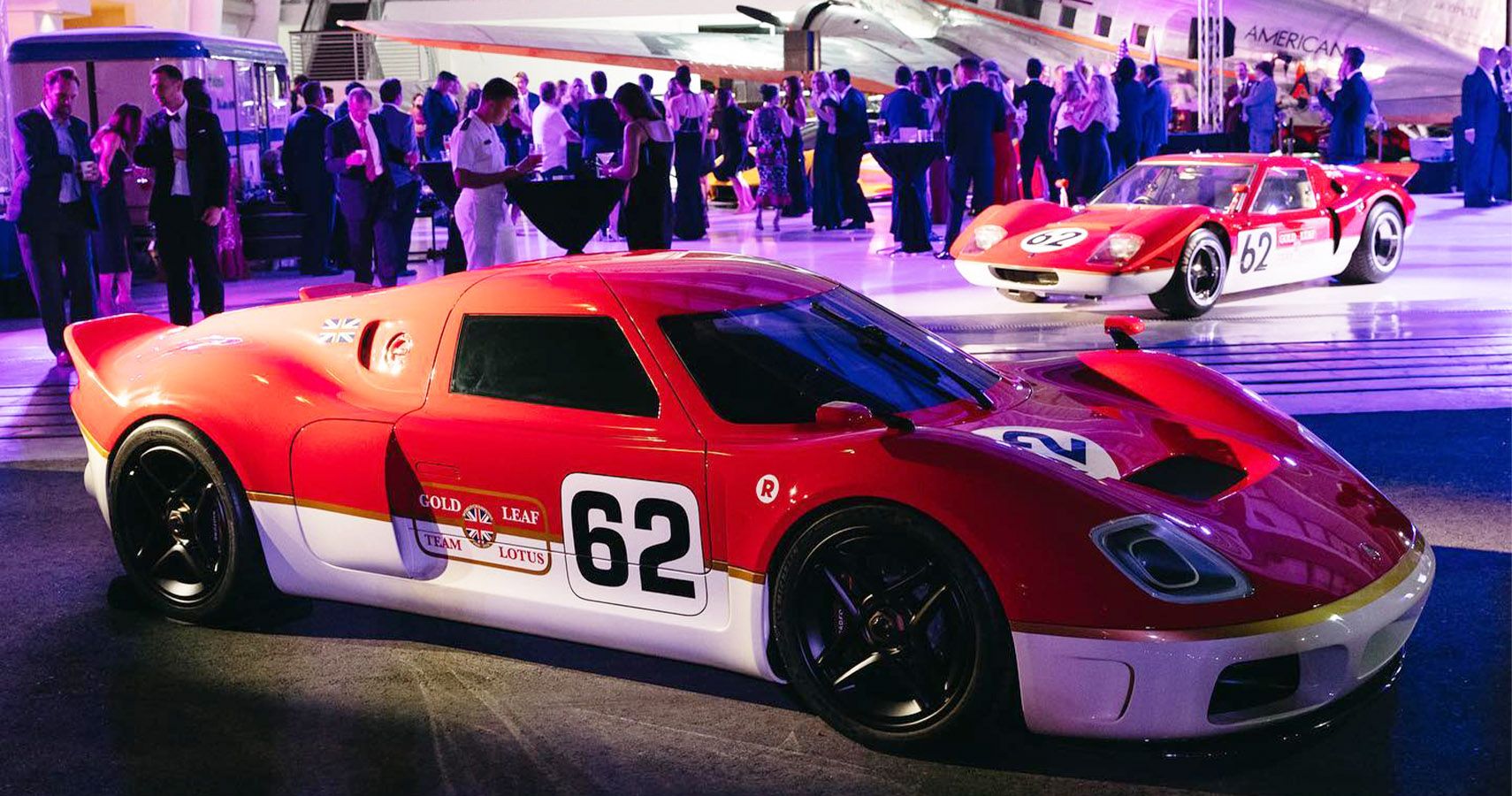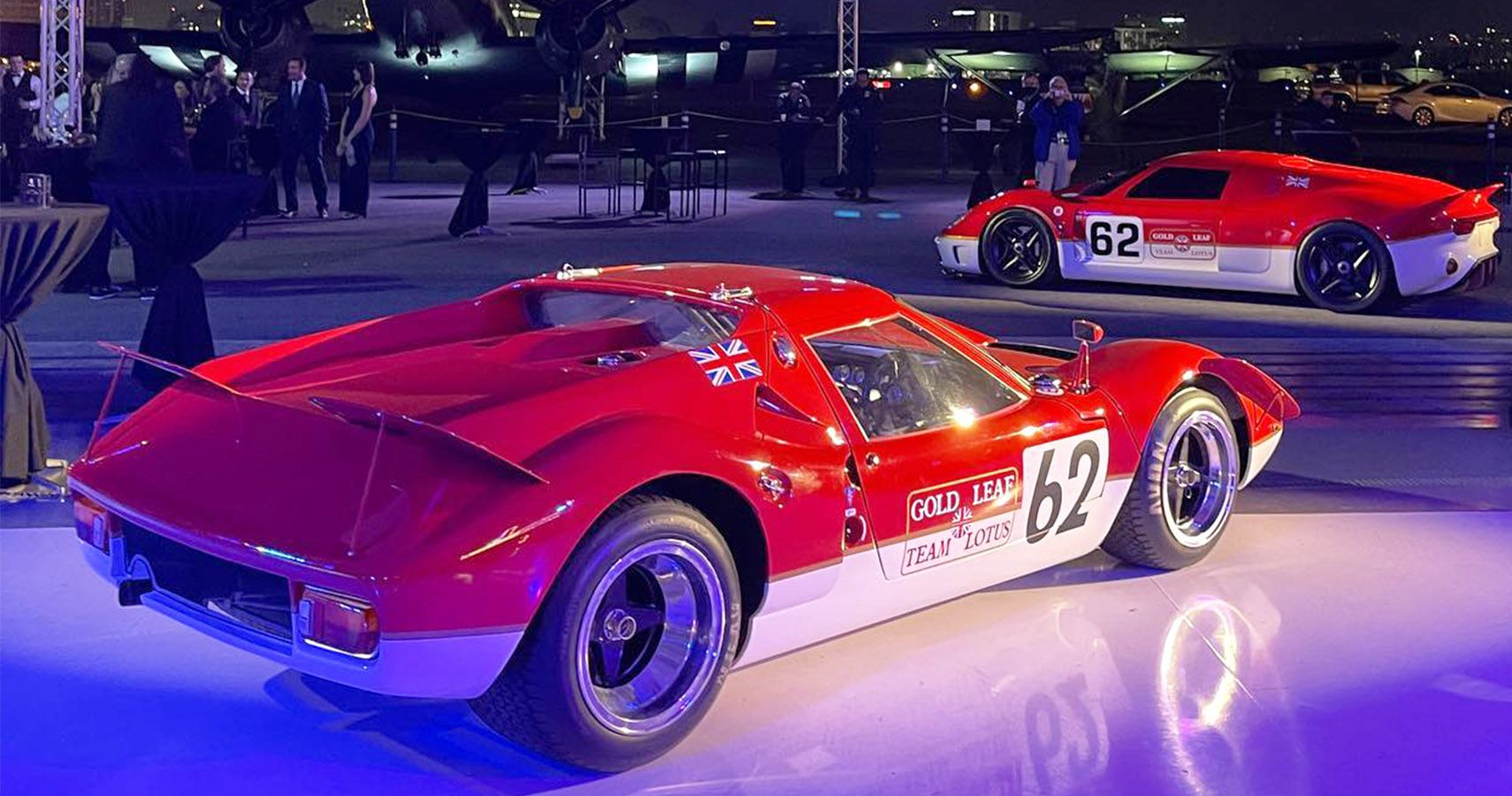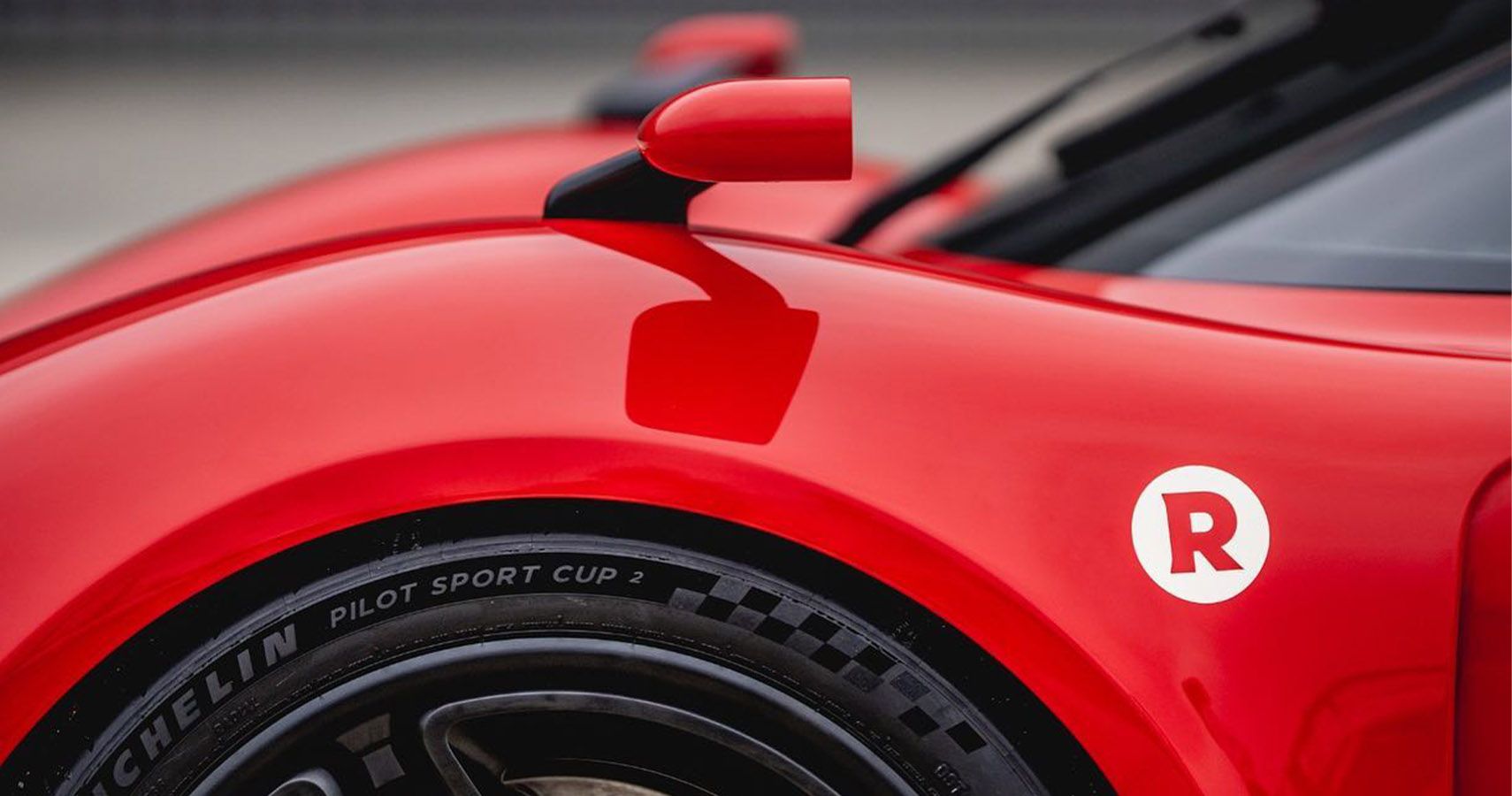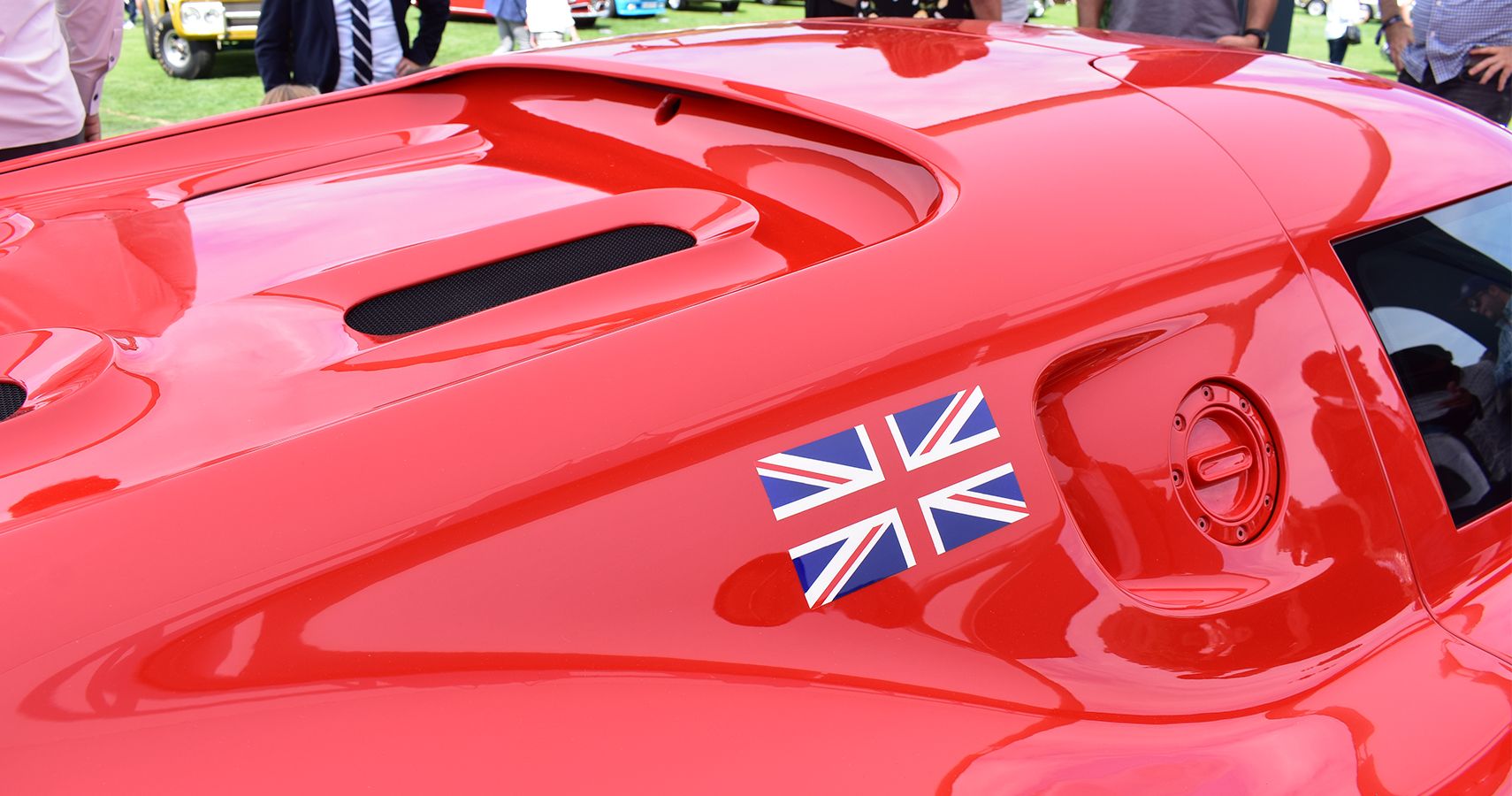When Radford unveiled the new 62-2 earlier this summer, social media mavens and members of the automotive press quickly clamored to spread the news. However, the swanky soiree at Lyon Air Museum introducing the svelte new sportscar led to a number of confusing and ill-informed articles published before Radford's PR team could clear the air. Other than an eye-popping retro design from Mark Stubbs, the celebrity names involved in the project, reality TV presenter Ant Anstead and Formula 1 World Champion Jenson Button, only served to further inflate the hype machine as it revved past the realm of facts.
I recently caught up with Anstead and Button, as well as Radford's lawyer-turned-business advisor Roger Behle, at The Quail, A Motorsports Gathering where the trio unveiled the 62-2's mid-range Gold Leaf trim package inspired by Colin Chapman's tobacco endorsement deal of the 1970s. But with all the rosé flowing, music bumping, and friends stopping by to chat, The Quail provided less than the ideal setting for diving into the 62-2's nitty-gritties.
Luckily, Radford CEO Dan Burge recently took the time to clear the air by running me through the laundry list of build details that make the 62-2 one of the more exciting supercar projects to emerge in recent memory.
Radford CEO Dan Burge
Highlights of Burge's impressive auto industry career include time at Williams and Lotus Engineering, where his position as Commercial Director put him directly within the pipeline that would, eventually, lead to Radford's revival. Around November of 2019, Anstead began pitching the concept of a new season of his MotorTrend show, Ant Anstead Master Mechanic, to the Lotus PR team. Traveling to Los Angeles regularly, Burge provided a perfect sounding board to discuss potentially moving beyond the scope of a reality television series.
"I went and met Ant and had dinner with him and spoke to him about the Type 62 program," Burge recalled, rhetorically asking, "Could it be more than a TV show?"
Getting to know Stubbs, Button, and Behle and their business aspirations for Radford as a company, Burge's interest steadily grew until, eventually, the conversation developed enough that he joined Radford as CEO (he still serves as an official Advocate for Lotus Engineering, just one of many remaining links between the two companies). I asked him what his average day-to-day looks like at Radford.
"Depends on the day," he laughed. "We’re a small, agile team. We’re doing a lot at the moment. We’re building a car and we’re building a company. It’s challenging being a startup. My role is very varied, across leading the technical side, the finance, the sales, and then working with some of the team on marketing and events, as well. It’s really varied, which makes it interesting."
Based On An Exige Chassis
Burge helped to lock in contracts with Lotus that delivered both chassis and support for the new Radford's first project—and here the conversation turned to clearing up the confusion proliferating across the net. Where other outlets like Autoweek reported the 62-2 employs an Evora's underpinnings (or the Evora's Emira successor), the truth requires more specificity, namely because the chassis beneath that svelte skin actually hearkens from an earlier Lotus, the Exige. Compared to the Exige and the Elise predecessor upon which it is based, the Evora and Emira's larger structure helps support more power and significantly more weight. But Radford wanted more power and less weight, so the Exige chassis required a bit of help.
"We’re taking a bonded, riveted aluminum structure from Lotus," Burge explained. "We do a bespoke tubular rear subframe that gives it a longer wheelbase, lighter weight, and greater stiffness. We’ve developed some of our own suspension, so the geometry is changed, we’ve got wider track and lower ride height."
Perhaps some of the mixup emerged because the 62-2's engine, on the other hand, sounds a lot like the supercharged 3.5-liter V6 that powers the Evora GT and the forthcoming Emira. But where the Evora GT maxed out at 380 horsepower and the Emira can be had with up to 400 horses (with the V6, though a turbocharged four-cylinder engine from Mercedes-AMG pumps out 360 ponies), Radford's base rating of 430 horsepower for the 62-2 in Classic trim still beats out every factory Lotus product not named Evija.
"In the base version, we carry over the engine very much from Lotus," Burge said, "Nobody’s going to drive a 430-horsepower Lotus and say it’s lacking in power."
As Button spelled out for me at The Quail, plenty of work goes into ensuring the reliability of Radford's significantly higher power output for the higher trim packages of Gold Leaf and John Player Special, all in a lighter package than anything Lotus ever powered with the Edelbrock-supercharged Toyota mill.
"We have the 500-horsepower upgrade, which uses upgraded internals," Burge confirmed. "So pistons, rods, cams, and a different supercharger pulley get us a little more power. Then to go to the 600 horsepower, we change to the Harrop TVS1900 supercharger, as well."
Drivetrain And Braking Details
Radford initially offered only the Classic-spec car with a six-speed manual transaxle, while the Gold Leaf and JPS packages employed a beefier dual-clutch automatic (much like the Emira will when equipped with the AMG engine). Both the stickshift and automatic offered limited-slip differentials, at the very least, but early orders for the 62-2 quickly revealed a market trend that Radford needed to accept.
"The reality is, everyone’s ordered the stick shift," Burge admitted. "We were surprised but actually, it’s the way the market’s going, a lot of people think you’re not a real driver unless you’ve got a knob in your hand."
"We’re listening to the customers and we’re now developing an upgrade to the manual transmission to have revised internals and a limited-slip diff to make sure we’ve got a stick-shift option for the 500 and 600-horsepower versions."
Beyond the gearbox, Radford also beefs up the rest of the drivetrain in response to the power gains above and beyond a typical Lotus Exige, Evora, or Emira. CP Technologies provides centerlock hubs and hollow driveshafts for the 500 and 600-horsepower cars, while various braking options from Brembo and its subsidiary, AP Racing, include four-piston calipers and iron discs for the Classic and Gold Leaf, then a serious bump up to carbon-ceramic discs and monoblock calipers for the JPS. Those brakes will hide behind two wheel choices, too.
"One is HRE, they do a forged-aluminum wheel for us," Burge said, "And the other one is Dymag, they do a carbon rim for us with a magnesium center that’s the lighter weight solution."
Keeping weight so low—Radford hopes for a curb weight right around 2,200 pounds—also allows for unassisted rack-and-pinion steering, another nod to a bygone era of sports cars epitomized by Colin Chapman's maxim, "Simplify, then add lightness."
Lightweight Carbon Fiber Clamshells And Suspension To Match
How could Radford manage to keep the 62-2's weight down around that of an Exige, which left the factory with a supercharged inline-four engine, while dropping in a larger powerplant and heavier-duty drivetrain components? Well, the modern miracle called carbon fiber sure helps. In addition to the carbon-ceramic brakes and carbon wheels, Radford also builds the 62-2's body panels out of woven strands of the lightweight material.
"Keeping the mass low, Burge said, "We’ll be lower than any other car with that powertrain partly because our bill of materials is higher. We’re using more exotic materials, we’ve got carbon brakes, carbon wheels, carbon body. That’s not achievable on a higher volume car."
"We do a bespoke, fully carbon body," Burge explained, "So front and rear opening clams, all fully carbon."
With a lightweight carbon body and more power, plus the braking system to match, the 62-2 should radically outperform both the Exige and Evora, the latter of which weighs about 850 pounds more—as long as it can put that grunt to the ground and maintain grip, that is. So I had to inquire more about the suspension details, beyond the custom rear subframe and multilink setup. But answering, Burge revealed that some details about the 62-2 might change in the near future.
"We’ve been approached with somebody that’s got something new that they really want us to showcase," he replied. "But we’ve not validated it yet, so that could change. Either way, it’ll be a four-way adjustable damper with, probably, an Eibach spring. And then we’ve got a lift system on the front because the car is very low, to make it usable. And that’s key, this car should be usable. We want people to drive it, not just look at it."
Interior Options And Tech
Burge confirmed Button and Anstead's claim that the 62-2 will also feature a retro-styled interior, though no early peeks were allowed at The Quail thanks to the limo-tinted windows on the Gold Leaf edition.
"Again, it’s completely customizable," he explained. "The two schemes that we’ve got and that are being produced at the moment are quite different. There’s the more classic, with a wooden steering wheel and lots of leather for that kind of customer. And then there’s the more focused, high-performance version which will be nearly all carbon fiber with maybe an Alcantara steering wheel."
The vague language and under-wraps design probably hinge on the fact that buyers can so readily work with Radford's team to make each interior one of a kind—including with the addition of unique fabrics from London tailor Mason & Sons.
"Through our partnership Stratasys 3D printing," he continued, "Not everything’s got to be completely tooled in a conventional OEM way. You can have it in carbon, you can have it in leather, Alcantara, or whatever else you want."
But no matter how custom or unique the classic interior design ends up, modern tech will creep into the mix.
"We want a usable car," Burge explained. "So it needs air conditioning and it needs Bluetooth. But we don’t need a 15-inch screen in the middle and 20 speakers. It’s not that car. But we will have a credible sound system that you can connect your phone to. But we also want to keep it simple, keep it classic."
What about that most controversial piece of automotive technology that the crew at The Quail sounded split on?
"I’m a cupholder man," Burge laughed. "I’ve always got a cup of tea with me, so…"
Modern Technology And Pricing
Other technological details also help Radford achieve the desired combination of vintage and modern styling. I immediately noticed the tiny insectoid mirrors mounted on the front wheel arches, as well as the lack of a rear window. Visibility, obviously, presented a challenge with the design, so Radford uses a camera setup to compensate for the aesthetic.
"The mirrors use a camera system because we don’t want the big ungainly mirrors that you get on a modern car," Burge explained. "We want the classic small mirrors. So we have a camera system from Kappa [Optronics], another one of our small partners. You’ve got a camera system for the rearview center mirror and then a reversing camera, as well, a conventional parking assist camera."
Given his history at Williams and Lotus, as well as the new Radford project, I had to ask Burge what he daily drives. For hauling the family around, he favors an Audi Q7, though he also currently drives a Lotus Evora GT loaner.
"It’s been a good benchmark for what we do," Burge admitted about the Evora. "It’s a car that is usable, it’s comfortable enough to drive on the freeway for a long journey. It’s got some luggage space, you’re not going to have your house in it but there is space to put an overnight bag and a jacket. Yet if you take it on the track, it’s extremely capable and entertaining. You’ve not got to be a Formula 1 driver to have fun in it, a gentleman driver can get enough out of it."
And of course, given the choice (if sales don't outpace the 62 build spots), how would Burge spec his own Radford 62-2?
"I didn’t think I would but I really like the classic spec," he admitted. "It’s a little bit more understated, it highlights some of the lines of the car that you don’t always see with the larger wheels and the ducktail spoiler, which is very cool but I quite like the slightly understated, classic version. So if I was to spec one but if you’ve seen some of the images of the British Racing Green one, I’m quite taken with that one."
Burge also revealed that for the buyers who even bother to ask about dollar figures (after all, if you have to ask...) pricing for the 62-2 starts at $400,000 plus tax. But with an infinite list of customization and options coming part and parcel with each build, that price can escalate quite quickly.
Outside of this first car from the revived Radford brand, Burge also spends his time focusing on growing the business. The guys at The Quail revealed plans for three more cars, none of them based on a Lotus, but the CEO also brought up the need to provide a network for customers the world over after taking delivery of their brand-new retro-styled supercar.
"The interest has been global, you can imagine," Burge said. "Only in the US have people physically seen the car, but we will take it to other markets. And we need to be able to support the customers in terms of service and repair."
Sources: radford.co, lyonairmuseum.org, peninsula.com, lotusengineering.com, autoweek.com, lotuscars.com, and motortrend.com.

